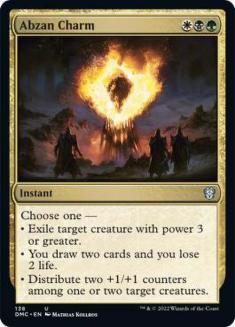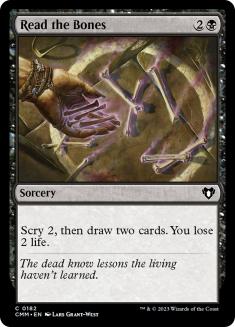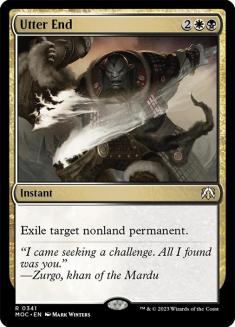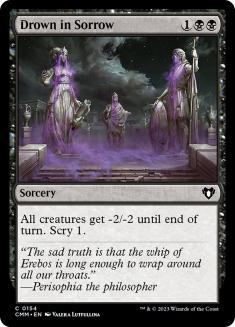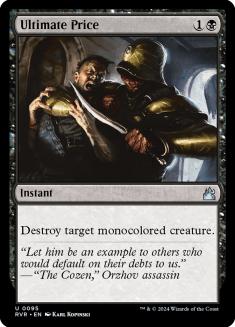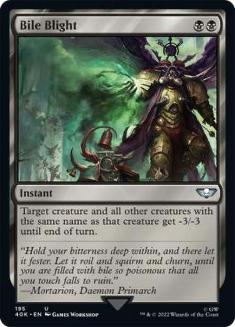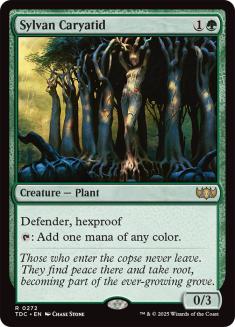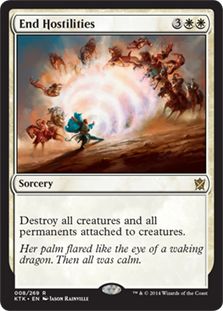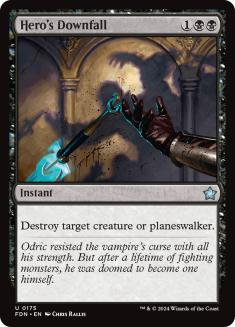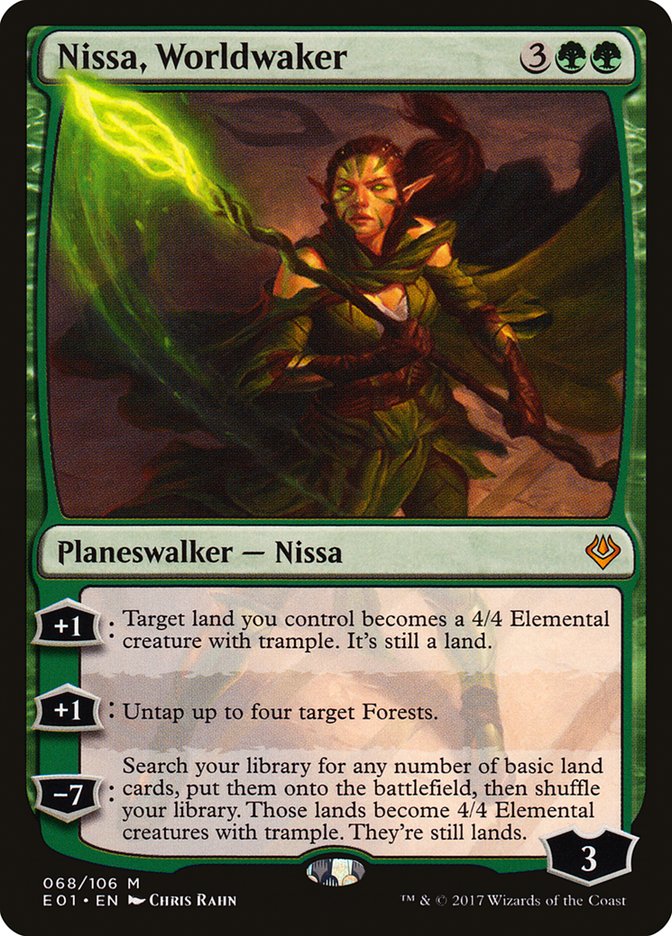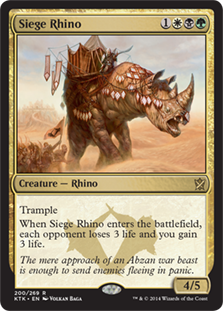So how about that Pro Tour, eh? Brussels. Dragons. Magic Cards. Pro Tour. Amen.
Although I didn’t perform particularly well, it was a blast with plenty to learn from. Realistically the only victim here is you, the reader, being
deprived of an epic first place tournament report. We’re going to have to both make do in that regard and move forward with what we have, which is an
unspectacular 6-7 performance and a sack full of broken dreams. Today I’ll give a quick recap of my testing, my thoughts on Abzan Control, the tournament
itself, what went wrong, and what you should be playing in Standard going forward.
Going into testing, it felt like Dragons of Tarkir mostly added new tools to existing archetypes and encouraged them to evolve and produce evolutionary
offshoots instead of brand new decks. This is usually the case when a new set is being added but old ones aren’t rotating out. Although plenty of new cards
are seeing play, decks like G/R Dragons or the new versions of U/B Control are relatively similar in form and function to older decks.
I decided on Abzan Control as my deck of choice early on in testing. It’s capable of beating everything and shines in sideboard games where it has all the
tools to be a favorite in most matchups. I also have plenty of experience with it and know the ins and outs of how to maneuver with it.
The list I ended up playing:
Creatures (11)
Planeswalkers (4)
Lands (25)
Spells (20)
- 4 Thoughtseize
- 3 Ultimate Price
- 2 Read the Bones
- 4 Hero's Downfall
- 1 End Hostilities
- 2 Utter End
- 4 Abzan Charm
Sideboard

This is a relatively traditional version of the deck with only a few new cards, namely Ultimate Price (which as the name suggests provides mucho value for
a bargain) and Duress. Ultimate Price allowed for a cheap way to deal with a large chunk of the relevant creatures in Standard and filled the
oh-so-critical two-drop slot. I find it to be a huge upgrade to Bile Blight, mostly due to the ease of casting it, but also because it kills very large
monsters. Ultimate Price also allowed me to shave Sylvan Caryatids; they were still great to draw in the earlygame, providing fixing and fueling explosive
starts, and now you had fewer gumming up your deck in the lategame.
The innovation of Fleecemane Lion coming from Brad Nelson felt nice but a little unnecessary to me in the sideboard or the maindeck. More often than not,
it would simply be fodder for a Bile Blight or Lightning Strike and was regularly outclassed in the lategame.
Adding Sidisi, Undead Vizier also requires you to add Satyr Wayfinder and/or Sylvan Caryatids, which I feel weaken the deck more than the value of adding
the versatile and deadly grand vizier. If you want to play with Sidisi, I suggest just playing Sultai where there is more built-in synergy.
In retrospect, Abzan Control felt a little underpowered for the Pro Tour. Before Dragons of Tarkir, it felt like I could do no wrong with the deck, build
it any which way I pleased, and it would perform well. After DTK came out, it felt like the deck was just barely coming up short. It felt like it shifted
from a 55% against the field deck to a 45% against the field deck. Most games played out in three ways: ones where I got completely crushed, ones where I
completely crushed my opponent, and ones where there was one key turn where opponents had to draw a specific card (or type of card) that would decide the
game, which they usually ended up doing. Maybe that’s just the nature of Thoughtseize decks in some ways, but I also feel there is now a critical mass of
resilient haymakers and card draw, all excellent in the mid to lategame, and the deck is stretched thin trying to deal with them all.
Anticipate, Jeskai Ascendancy, Treasure Cruise, Dig Through Time, Haven of the Spirit Dragon, Den Protector, assorted broken Dragons, and just a general
variety of threats made things rougher when trying to outright control the game. As a whole, it felt like Abzan wasn’t improving as fast as the rest of the
format. There are also more ways to deal with Siege Rhino and Courser of Kruphix nowadays too, notably Roast.
I still liked the deck, and it really felt like it had the potential to perform well, it just seemed like more games were slipping away which would’ve been
layups in the previous format.
Sideboard Guide
VS Mono Red
Out:
In:
Your basic “Don’t Immediately Die” matchup. Let Drown in Sorrow, Courser of Kruphix, and Siege Rhino do their thing. Interestingly, I’ve found Read the
Bones to often be more useful than Abzan Charm since being able to scry into a Drown in Sorrow is very relevant. Abzan Charm can’t kill much, but it still
sometimes hits a Lightning Berserker or Foundry Street Denizen. End Hostilities gets a little worse now because of dash as well.
VS Abzan Aggro
Out:
In:
This is the matchup where having a bunch of Ultimate Prices can suck, but they still hit Tasigur, the Golden Fang, Whsiperwood Elemental, Wingmate Roc,
Warden of the First Tree, Surrak, the Hunt Caller, and what have you. You should have the lategame thanks to Elspeth, Sun’s Champion and card draw so hope
they don’t curve out too aggressively.
VS U/B Control
Out:
In:
This matchup can play out in many different ways due to many different builds of U/B or Esper Control. If they have Perilous Vault, Utter End is better
than Hero’s Downfall. If they have Planeswalkers and Dragons, Hero’s Downfall is better than Utter End. But keep in mind that that Utter End exile clause
can be relevant against Haven of the Spirit Dragon.
There are games where you strip their hand and resolve an early threat if you have a solid opener and games where you wait to cast anything until the super
lategame if you have a bunch of lands and no opportunity to find an opening. That’s really what you’re looking for; a chance to pounce. A resolved Nissa,
Worldwaker is usually good enough to end the game. Silumgar, the Drifting Death can be particularly devastating due to its effectiveness against Elspeth,
Sun’s Champion and near invulnerability, which actually makes End Hostilities a consideration as well.
VS G/R Dragons
Out:
In:
G/R Dragons delivers powerful consistent beats. A matchup that should be good on paper is surprisingly tricky. Haven of the Spirit Dragon and Stormbreath
Dragon are what make this matchup scary. Haven of the Spirit Dragon means it can take an especially long time to run them out of threats, which is a
problem compounded by the inability to exile Stormbreath Dragon with Abzan Charm and Utter End.
VS Abzan Control
Out:
In:
Gain value, remove their creatures, and deploy your own. Keep using your mana to do things until one of you is out of things or life.
VS G/W Devotion
Out:
In:
This matchup is actually a large reason why Ugin, the Spirit Dragon is a maindeck card, since a surprising amount of game 1s play out like so:
1. Remove their stuff.
2. Elspeth, Sun’s Champion holds off a Mastery of the Unseen for as long as possible.
3. Ugin, the Spirit Dragon arrives to clean up.
VS Jeskai Tokens
Out:
In:
If the game goes too long with you landing an Elspeth, Sun’s Champion, they will eventually find a way to beat you. Your creatures and Elspeth are great,
but your removal is not since they have a diverse set of threats.
VS Sultai Reanimator
Out:
In:
Ugin, the Spirit Dragon comes in handy as the big trump card here as well. Dealing with Whip of Erebos and making sure you removing Sidisi, Undead Vizier
before it can exploit is crucial.
The Tournament
My preference for DTK Draft was to stay open to signals, but I preferred to be in blue paired with anything, with U/B Control and U/W Flyers being my
favorites, and G/R Beats being an excellent backup plan. My first draft went fine, but I was lacking in exploit enablers when pack 3 didn’t offer me a
single Jeskai Sage or Sultai Emissary. These creatures, along with Palace Familiar, are especially excellent in this format since so many creatures have
one toughness. They are essentially the mayonnaise of the archetype: You don’t notice how delicious it is until one day it isn’t there.
Here’s my first draft deck:
Creatures (18)
- 1 Typhoid Rats
- 1 Gurmag Angler
- 1 Ugin's Construct
- 1 Lotus Path Djinn
- 2 Silumgar Butcher
- 1 Ruthless Deathfang
- 1 Wandering Tombshell
- 1 Elusive Spellfist
- 1 Zephyr Scribe
- 1 Vulturous Aven
- 2 Updraft Elemental
- 1 Ukud Cobra
- 2 Monastery Loremaster
- 2 Ojutai Interceptor
Lands (17)
Spells (5)

I emerged 2-1 from my pod. The Highlights:
Match 1 Game 3 – Had stabilized in a commanding position with Monastery Siege out, and my opponent topdecked a Palace Siege that threatened to quickly kill
me. The turn before I died I had one last chance to find an answer with Zephyr Scribe and looted into Butcher’s Glee, which bought me just enough life to
win.
Match 2 Game 1 – I had Monastery Siege going the entire game but was held off by a megamorphed Aerie Bowmasters and various green and white fatties. I
managed to kill my opponent in two alpha strikes the turn before I ran out of cards. Unfortunately, I lost the next two games to Whisperwood Elemental
and/or Secure the Wastes.
The rest of the day in Constructed was a seesaw of wins and losses. A loss to Makihito Mihara in the games where he was able to curve out. A win against
G/W Devotion where my Elspeth into Ugin plan worked perfectly. A loss to Jeskai Tokens looting a million times. A win versus G/R Dragons followed by a loss
to R/B Dragons and a dashed Kolaghan, the Storm’s Fury and Stormbreath Dragon. That left me at a disappointing 4-4, but I was still feeling good. It hadn’t
felt like I had made numerous miscalculations, only that the wins weren’t coming.
My second draft:
Creatures (16)
- 1 Gurmag Angler
- 1 Dragonscale General
- 1 Wandering Champion
- 1 Tasigur, the Golden Fang
- 1 Arashin Cleric
- 1 Sandsteppe Outcast
- 1 Great-Horn Krushok
- 1 Cunning Breezedancer
- 1 Custodian of the Trove
- 3 Gurmag Drowner
- 2 Updraft Elemental
- 1 Palace Familiar
- 1 Sandstorm Charger
Lands (17)
Spells (7)

This deck has an identity crisis. I was trying to draft a U/W Tempo deck, but I kept getting passed black bombs, and this is what I ended up with.
Highlights:
Match 1 – I get thoroughly trounced by a pair of Goblin Heelcutters and various lumbering green blobs.
Match 2 – I manage to beat a G/W deck by racing a Dragonlord Dromoka with Cunning Breezedancer and double Artful Maneuver.
Match 3 – The Esper mirror. Game 1, I crushed with my bombs, but games 2 and 3 my deck crapped out on me, especially since I kept a real stinker of a hand
on the play in game 3 with only two Plains for land and didn’t end up getting there.
Going back into Constructed, I beat a G/B devotion deck before finally falling to G/R Dragons and dropping.
The tournament felt like I had relatively good form, but the results didn’t come. Usually I have a nice heap of misplays to look back on or obvious wrong
assumptions about the format and improvements I could make to my Constructed deck, but I actually feel happy with how I did in these regards. Sure I
made plenty of small mistakes here and there, but that’s pretty much going to be a given.
That’s just how a tournament can go.
Win. Lose. Win. Lose. Win. Lose. Win. Lose. 4-4. Frowny Face.
Lose. Win. Lose. Win. Lose. Drop.
Magic can be a harsh mistress. Sometimes you get tossed around on the stormy seas of competition, gasping for wins. A wave might toss you high enough for a
moment to see through the clouds, and you’ll soar like a dragon for a few moments. Just long enough to get a taste of the light and of winning. Long enough
to catch your breath and beg the good and holy gods old and new, any that will listen, for prosperity. Zeus, Heliod, whoever. Only it doesn’t work like
that, and no matter how much you beg or plead for another win, you might just come crashing back down through the waves, to plea to Poseidon or Thassa.
This purgatory continues until all hope is dashed upon jagged rocks, the scraps waiting to be collected for the next trials. That can be Magic.
The State of Standard
First of all, is Abzan Control a good choice going forward. I would classify it as a fine deck, but it’s not one I would strongly recommend. I’m not sure
if it’s capable of competing as effectively as it once did in the current Standard format. There are many different ways to build Abzan Control so maybe
the solution is out there. As it stands, I still like my list a quite a bit, but I feel there might be better archetypes to explore.
It’s difficult to say what the best deck is. Pro Tour Dragons of Tarkir Standard was incredibly diverse, and the really interesting thing was the diversity
within archetypes. There are numerous was to build G/R Aggro decks, with or without Dragons, going low with tokens and Atarka’s Command, ramping more into
Dragonlord Atarka, or using a morph sub theme with Deathmist Raptor, Den Protector, Rattleclaw Mystic, and Ashcloud Phoenix. It feels like there are many
different ways to build every single archetype. The number of different successful U/B Control and Dragon Control lists is also startling.
I feel that is part of the key to a good format. Similar cards that give deckbuilders difficult decisions. Interchangeability. Power spread out across the
colors.
Find something you’re comfortable with that isn’t an underdog to a huge chunk of the expected metagame. Now is not the best time to be netdecking as
anything more than a starting point. You need to explore the cards that excite you. It probably will take lists longer than usual to
become more refined, so now is a great time to be the one doing the refining.
It seemed like the polarized decks succeeded. Hyper control and hyper aggro did well at the Pro Tour.
Control is back and has officially graduated to a real deck in the format. Therefore, Mono-Red Aggro is going to be a great choice since it is mostly what
is keeping control in check.
Jeskai Tokens seems like it has the tools to put up a good fight against all the major decks right now. It has plenty of play. In the battle between Abzan
and Jeskai, I feel like Jeskai is on the winning side now. The main reason I had switched over to Abzan in the first place was because of its strength
against Jeskai decks, but I felt that balance has tipped. I think it might be time to do a switch back.
Congrats to everyone in the top 8, especially Adrian Sullivan who’s had it come for a long time.
Now it is back to the drawing board to work on the “Win something, Shaun!” plan.
That’s the great thing, though, even though you can’t win em’ all, there’s always another Magic tournament. Always one more chance at glory through card on
card combat. Standard is excellent right now, so go explore and enjoy it.
Unless, of course, we wake up tomorrow to see headlines that Wizards of the Coast was lining their cardboard with psychoactive drugs to drive us into a
card buying frenzy and is shut down and Magic cards are permanently banned forever. You could wake up tomorrow and find out that today really was your last
chance. But how likely is that?
…

